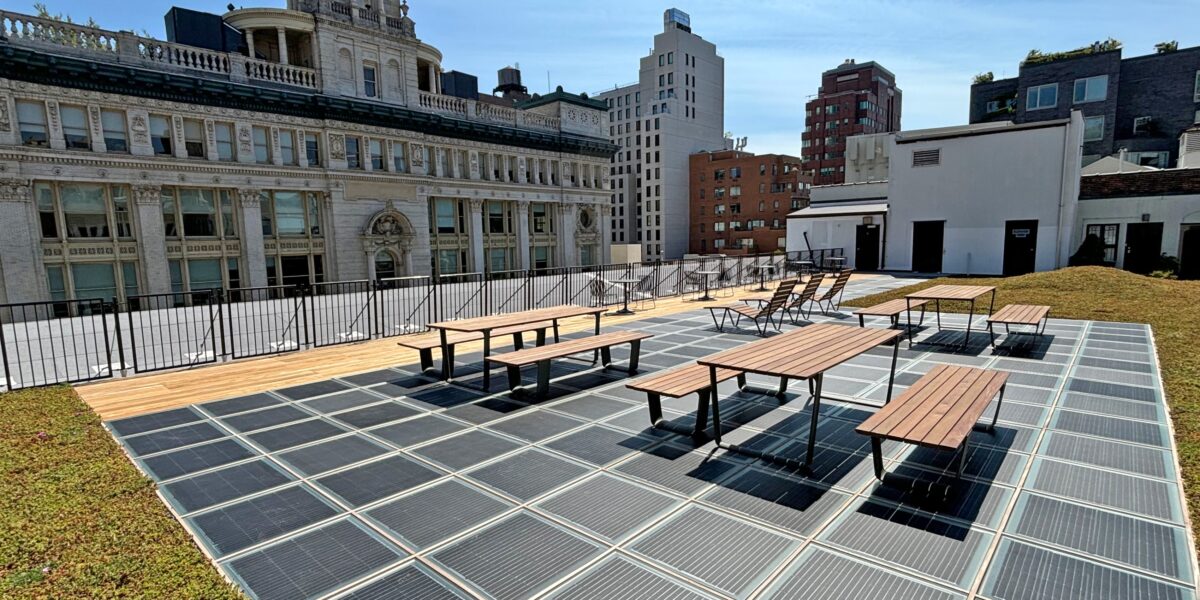Onxy Solar, a Spain-based building-integrated PV (BIPV) manufacturer, has unveiled new walkable solar floor tiles that are suitable for use on decks, sidewalks, or patios.
The new products weigh 23 kg, measure 75 x 75 cm, and have a nominal capacity of 75 W. Custom sizes up to 4m x 2m are available.
The tiles are made with 8 mm thick safety glass that has an anti-slip surface, according to Diego Cuevas, Onyx Solar’s vice president of business development North America. They are intended for pedestrian traffic only, noted Cuevas, able to withstand up to 400 kg/m2.
The patented Onxy Solar glass tiles are compliant with standards set by the International Electrotechnical Commission (IEC) and Underwriters Laboratories (UL), such as UL410 for slip resistance. The solar PV technology is 16 multicrystalline silicon cells with a five-busbar layout, encapsulated with ethylene vinyl acetate (EVA) foil.
The panels can be installed on standard raised-access floor systems, such as PVC polymer and metal pedestals, allowing electrical interconnections on the backside of each panel. “The system selection is up to the client or design team,” said Cuevas.
Onyx Solar has supplied the PV tiles to corporations and institutional clients, such as US-based Apple and Spanish institutions, such as Valencia's City of Arts and Science, and the Royal Theater of Madrid.
“Here in New York City, we have already supplied floor tiles to four different projects for private residences. As you know, real estate in NYC is extremely expensive and this product helps developers and building owners generate renewable energy onsite without giving up any single sqft of usable space. Of course, Local Laws 92/94 are boosting the use of this type of product,” he said, referring to local regulations requiring roofs of certain buildings to be equipped with a green roof or solar photovoltaic.
A recent example of a Manhattan project is at 625 Avenue of the Americas, integrating the PV floor tiles in Ipé hardwood grid frame, completed in collaboration with New York-based solar installation company Solardeck.

This content is protected by copyright and may not be reused. If you want to cooperate with us and would like to reuse some of our content, please contact: editors@pv-magazine.com.



This seems like those PV roads. Something that seems neat but is monumentally idiotic after thinking about it.
Put them up higher and now you have shaded areas for people and also rain covers, and they will actually stay cleaner and less damaged, will need less reinforcement, so now could easily double the energy output for the same cost and provide a better area for people. Less cost, less complexity, more useful, and more output? Who would ever want that?